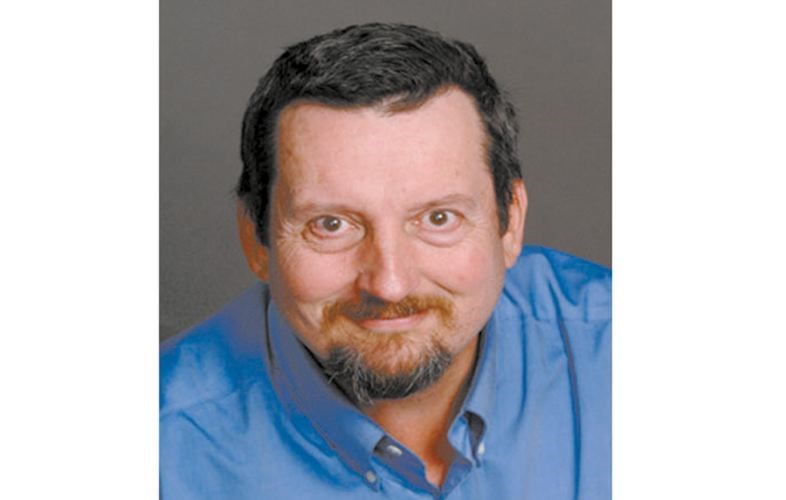Last week, the Nobel Prize committee announced the winners in physics and chemistry. Both involve a branch of mathematics called topology but in very different ways.
The physics prize was awarded to David J. Thouless, F. Duncan, M. Haldane and J. Michael Kosterlitz for their work on advanced mathematical methods which explain strange phenomena occurring in unusual states or phases of matter.
In particular, Thouless and Kosterlitz considered the physics of a two-dimensional surface or, at least, the physics inside layers so thin they can essentially be considered two-dimensional. In effect, they provided a theoretical framework in which to examine Flatland, a novel by Edwin A. Abbott in 1884.
Haldane took physics one step further and examined matter in threads so thin, they are effectively one dimensional entities. A string of atoms sufficiently long enough so that the length is vastly larger than either their width or height is one dimensional in space.
It is perhaps not too surprising the physics taking place in Flatland is very different from the macroscopic world. Even though everything is made of atoms, the restriction to two-dimensions results in completely different properties from three-dimensional objects, particularly when a sheet of single atoms is formed. Forming one-dimensional strings results in even more unusual atomic environments.
To do their work, the three Laureates' employed topology which is, in broad terms, a study of the geometric properties and spatial relationships of points unaffected by a continuous change of size or shape.
One way of thinking about this is to ask what is the difference between a wedding ring and a bagel? From a topological point of view, the answer is nothing. A bagel has the same topology as a wedding ring - the only difference is it is fatter with a proportionally smaller hole through the middle.
But what is the difference between a bagel and a coffee mug? Again, the topological answer is nothing. This might be a little bit more surprising but from a topological perspective, a coffee cup is just a funny shaped ring. Both feature only one hole that goes all the way through.
The advantage of using this sort of mathematics to describe one- and two-dimensional physics is it naturally leads to quantization. After all, an object can have no holes, one hole, two holes, etcetera, but it is impossible to have half a hole. The topology of rings requires a quantum structure as does the world of atoms and similar phenomena.
Thouless and Kosterlitz explained phase transitions in two dimensional space particularly with respect to small vortices in flat material where vortices behave as if they are quantized. Their theory is broadly applicable in other areas of physics such as statistical mechanics.
Thouless and Haldane were able to explain the magnetic behaviour of atomic chains and, in particular, Thouless was able to provide a theoretical framework for the quantum Hall effect.
The chemistry Prize was awarded to Jean-Pierre Sauvage, Sir J. Fraser Stoddart and Bernard L. Feringa for their work in developing molecular machines.
In science fiction, such machines are referred to as nanites or nanobots as their size is measured in nanometres or billionths of a metre in length. Atomic radii are typically 0.1 to 0.2 nanometres so these machines are made from very few atoms connected in very specific ways.
The research in this area started with a simple idea - could rings of atoms be interlinked? Much of the original research in the 1950s and 60s took a strictly organic chemistry approach and met with limited success. Reactions would typically yield only a per cent or two of the desired compound.
In the early 1980s, Jean-Paul Sauvage was studying the photochemistry of copper centres and noticed some of the molecules he was using were intertwined in such a way that he should be able to create two-linked molecular rings. He published his first results in 1983. As this was related to work I was doing for my Ph.D., I know from personal experience he caused quite a stir amongst chemists.
His work depended upon template chemistry and reinforced the role metal ions play in assembling complex molecular systems. But it also allowed his research group to create some truly amazing molecular architectures with rings attached to rings in a variety of shapes. These compounds were given the name catenanes.
By the mid-1990s, he was able to construct a catenane in which the two rings rotated relative to one another. Stoddart was able to loop a ring around an axle and effectively build a tiny molecular wheel and Feringa blended these ideas to produce an actual machine capable of crawling across an atomic surface.
Their work is molecular topology - topology with atoms and molecules. It has led to the hope of one day being able to build machines small enough to fit into cells and repair damage.



